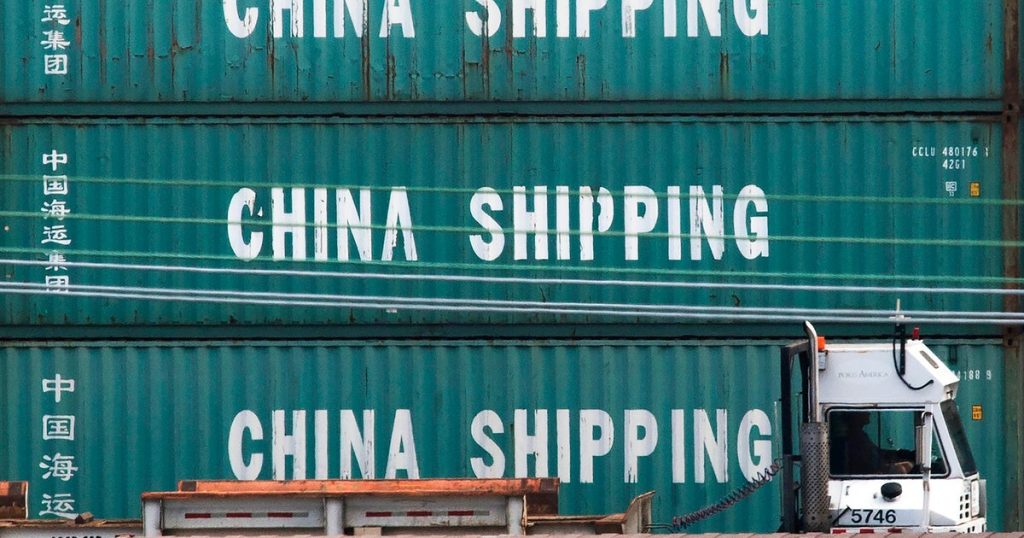In a significant escalation of global trade tensions, China has announced a 34% tariff on all imports of U.S. products, effective April 10. This new levy directly mirrors the tariff issued by the U.S. government as a part of President Donald Trump’s recent trade policy, which he characterized as a “reciprocal” response to tariffs that China has already placed on American goods. Additionally, China is implementing stricter export controls on rare earth elements, crucial materials used in cutting-edge technologies. The unfolding situation threatens to further disrupt international markets and incite retaliatory actions from other nations affected by similar trade policies.
| Article Subheadings |
|---|
| 1) Details of the Newly Imposed Tariff |
| 2) Export Controls on Rare Earth Elements |
| 3) Reaction from the United States and Global Markets |
| 4) Legal Actions Taken by China |
| 5) Outlook for Future Trade Relations |
Details of the Newly Imposed Tariff
The announcement of the 34% tariff on U.S. imports comes amid escalating trade disputes between the two largest economies in the world. China’s decision follows a similar measure from the U.S., where President Trump implemented tariffs targeting numerous foreign imports, which he claims are necessary to protect American jobs and industries. Set to take effect on April 10, this measure will impact a broad range of products imported from the United States, potentially resulting in increased prices for consumers and businesses relying on U.S. goods. U.S. officials have argued that tariffs are a “reciprocal” measure since Chinese tariffs had already reached exorbitant levels, as high as 67%, thus necessitating a strong counter-response.
Export Controls on Rare Earth Elements
In addition to tariffs, China announced it would tighten its export controls on rare earth elements, materials essential for manufacturing high-tech products, including computer chips and electric vehicle batteries. This measure entails adding 27 American companies to the list of firms facing trade sanctions, which directly impacts the technology sector in the United States. The specific rare earth elements affected include samarium, gadolinium, terbium, dysprosium, lutetium, scandium, and yttrium, which are critical inputs for a range of advanced technologies. This move may exacerbate existing supply chain issues and create additional hurdles for U.S. companies seeking these crucial materials.
Reaction from the United States and Global Markets
The reaction to these tariffs and export controls has been immediate and intense. The announcement has sparked a significant sell-off in global stock markets, with American markets recording some of the steepest declines since the onset of the COVID-19 pandemic. Initial reactions reveal that investors are deeply concerned about the implications of renewed trade tensions and their potential impact on economic growth. Asian and European markets are likely to follow suit, reflecting the interconnectedness of the global economy. Allies of the U.S. have also expressed concern over the possibility of retaliatory measures, as countries like the United Kingdom consider their own economic options in light of increased tariffs.
Legal Actions Taken by China
To further complicate the strained relations, China has filed a lawsuit with the World Trade Organization (WTO) challenging the legitimacy of the U.S. tariffs. This legal action emphasizes China’s view that the tariffs violate international trade rules and could set a dangerous precedent for global commerce. By pursuing this route, China seeks to leverage international platforms to contest what it perceives as aggressive economic policies targeting its industries. Such actions could lead to lengthy negotiations in the WTO, potentially delaying any resolution to the trade conflict and exacerbating tensions between the countries involved.
Outlook for Future Trade Relations
As the situation evolves, the future of U.S.-China trade relations remains uncertain. Both nations acknowledge the need for dialogue, with many nations waiting to see if fruitful negotiations can emerge from the current turmoil. Despite the financial fallout, officials from both sides have expressed openness to discussions aimed at reaching a compromise. However, the imposition of tariffs and export controls suggests that both sides are prepared to take calculated economic risks in pursuit of their trade objectives. Should the hostilities continue, the global economy risks further destabilization, with potential consequences for employment, investment, and consumer prices.
| No. | Key Points |
|---|---|
| 1 | China will levy a 34% tariff on all U.S. imports starting April 10. |
| 2 | The Chinese government is tightening export controls on rare earth elements. |
| 3 | Global markets have reacted negatively, with substantial losses reported in the U.S. stock market. |
| 4 | China has filed a lawsuit with the WTO regarding U.S. tariffs, claiming they violate trade regulations. |
| 5 | Future trade relations between the U.S. and China remain uncertain but may depend on negotiations. |
Summary
As tensions between the U.S. and China escalate with the announcement of tariffs and export controls, the prospect for a swift resolution appears bleak. Both countries have demonstrated their willingness to engage in protective economic policies, raising fears among global investors about the potential long-term impact on international trade and market stability. The unfolding circumstances serve as a reminder of the complexities of global commerce and the challenges that arise when economic interests collide.
Frequently Asked Questions
Question: What is the significance of the 34% tariff imposed by China?
The 34% tariff reflects China’s response to the U.S. tariffs and aims to protect its economy by making U.S. goods more expensive for Chinese consumers, potentially reducing imports from the United States.
Question: How do rare earth elements relate to the current trade dispute?
Rare earth elements are critical for manufacturing advanced technology products, and their export controls by China could impact industries reliant on these materials, particularly in high technology and electric vehicle sectors in the U.S.
Question: What are the implications of China’s lawsuit with the WTO?
China’s lawsuit represents a formal challenge against U.S. tariffs, seeking to contest their legality under international trade laws, which could lead to protracted legal battles and impact future trade relations.


